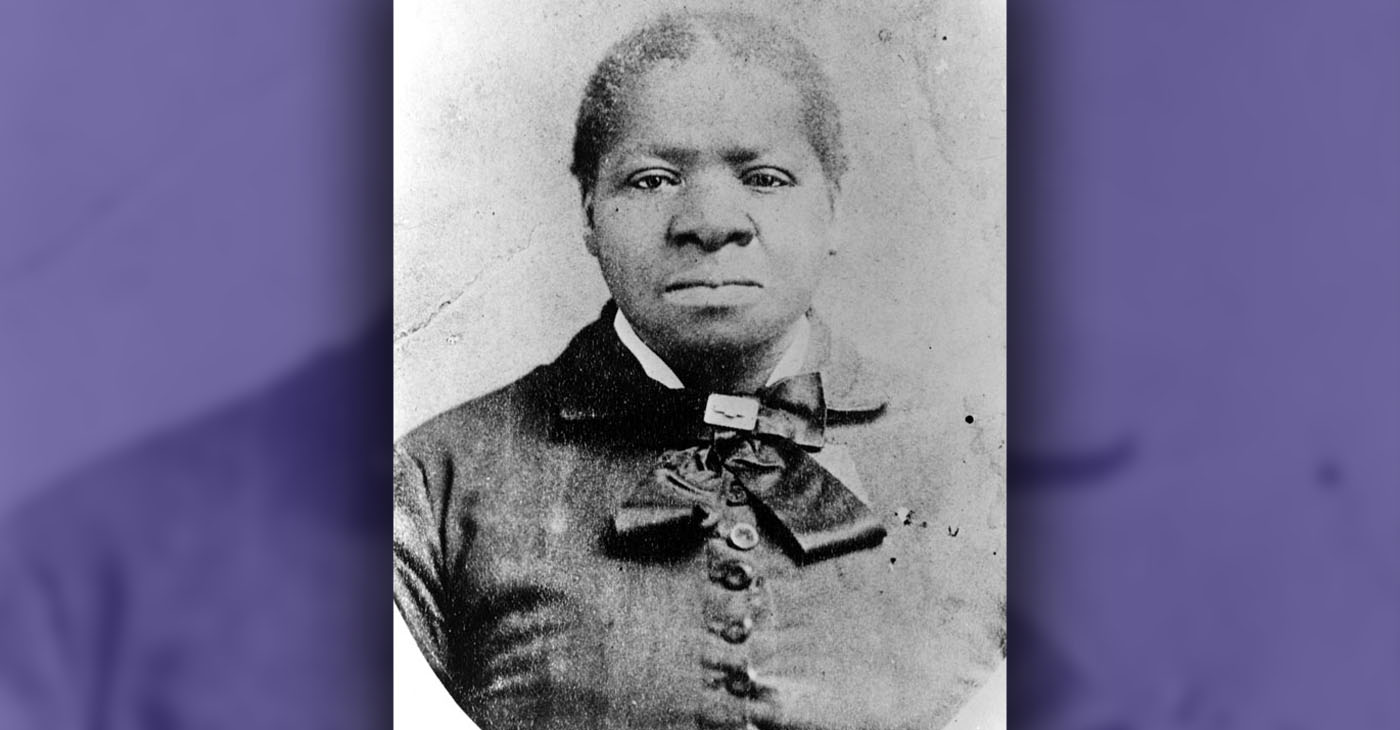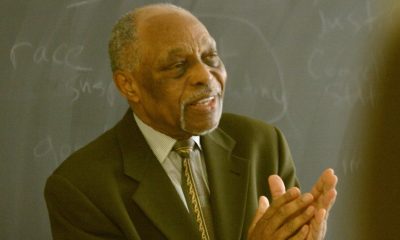Black History
Former Slave Bridget “Biddy” Mason, Los Angeles Real Estate Mogul
After 10 years of freedom, working hard and saving her money, Bridget “Biddy” Mason (1818–1891), in 1866, purchased two lots on the outskirts of Los Angeles, which was a small pueblo at the time. She paid $250 for the Spring Street property; the first piece of land Mason owned. This is said to have been a “remarkable feat for a woman having spent the first 37 years of her life enslaved.” But she wouldn’t settle for it being the last. She would become a savvy businesswoman.

By Tamara Shiloh
The state of California joined the Union in 1850 as a free state. But after spending five years enslaved there, Bridget “Biddy” Mason (1818–1891) challenged her owner, Robert Smith, for her freedom.
In 1856, a Los Angeles district judge approved Mason’s petition, a ruling that freed Mason and 13 members of her family. She then made Los Angeles her home.
Not much is known about Mason’s earlier life. She was born into slavery, likely in Georgia. She was owned by slaveholders in Georgia and South Carolina before being returned to Mississippi where, as a young adult, she was enslaved in the Smith home. She cared for Smith’s sickly wife and the couple’s children, becoming a nurse and midwife, work she continued throughout most of her life.
After becoming free, Mason met John Griffin, a white Southern doctor who was impressed with her midwife and nursing skills. She began working for him, delivering hundreds of babies in Los Angeles. In her medicine bag, she carried the tools of her trade and the papers the judge had given her affirming that she was free.
After 10 years of freedom, working hard and saving her money, Mason, in 1866, purchased two lots on the outskirts of Los Angeles, which was a small pueblo at the time. She paid $250 for the Spring Street property; the first piece of land Mason owned. This is said to have been a “remarkable feat for a woman having spent the first 37 years of her life enslaved.” But she wouldn’t settle for it being the last. She would become a savvy businesswoman.
In 1884, Mason sold the north half of her first property for $1,500. On the other half, she built a two-story brick building for rentals. That same year she sold another lot for $2,800. She also helped her family buy properties around the city. In 1885, she deeded a portion of the Spring Street property to her grandsons. She signed the deed with an X because she had never learned to read or write.
Mason organized what is now the oldest African American church in Los Angeles: First A.M.E. Church. She used her wealth to give back to and support the entire community, donating to numerous charities, feeding and sheltering the poor, visiting prisoners, and was instrumental in founding an elementary school for Black children.
At the time of her death in 1891, Mason had amassed a fortune of $300,000 (approximately $6 million today), making her the “richest colored woman west of the Mississippi.” She was buried in an unmarked grave in Evergreen Cemetery.
In 1988, the mayor of Los Angeles and members of the church she founded held a ceremony, during which time her grave was marked with a tombstone. More importantly, Mason left a legacy of perseverance, compassion, and triumph.
Encourage young readers to learn more about this real-life champion for civil rights who was born into slavery in Arisa White, Laura Atkins and Laura Freeman’s “Biddy Mason Speaks Up.”
Activism
Oakland Post: Week of April 24 – 30, 2024
The printed Weekly Edition of the Oakland Post: Week of April 24 – 30, 2024

To enlarge your view of this issue, use the slider, magnifying glass icon or full page icon in the lower right corner of the browser window. ![]()
Activism
Oakland Post: Week of April 17 – 23, 2024
The printed Weekly Edition of the Oakland Post: Week of April 17 – 23, 2024

To enlarge your view of this issue, use the slider, magnifying glass icon or full page icon in the lower right corner of the browser window. ![]()
Black History
Matthew Henson: Explorer Extraordinaire
Matthew Henson, a trailblazing explorer who overcame countless obstacles to leave an incredible mark on history. Born on August 8, 1866, in Charles County, Maryland, his journey is a testament to the power of determination and the spirit of adventure.

By Tamara Shiloh
Matthew Henson, a trailblazing explorer who overcame countless obstacles to leave an incredible mark on history. Born on August 8, 1866, in Charles County, Maryland, his journey is a testament to the power of determination and the spirit of adventure.
Henson’s life began amidst the backdrop of post-Civil War America, where opportunities for African Americans were scarce. From a young age, he possessed an insatiable curiosity about the world beyond his small town. At the age of 12, he embarked on a journey that would change the course of his life forever when he joined a merchant ship as a cabin boy.
His most famous expedition was his journey to the Arctic with renowned explorer Robert E. Peary. In 1887, Henson joined Peary’s crew as a seaman and quickly proved himself to be invaluable with his skills as a navigator and craftsman. Over the course of several expeditions, Matthew endured extreme cold, treacherous terrain, and grueling conditions as he and Peary sought to reach the elusive North Pole.
In 1908–09, Peary set out on his eighth attempt to reach the North Pole. It was a big expedition, with Peary planning to leave supplies along the way. When he and Henson boarded their ship, the Roosevelt, leaving Greenland on August 18, 1909, they were joined by a large group. This included 22 Inuit men, 17 Inuit women, 10 children, 246 dogs, 70 tons of whale meat, blubber from 50 walruses, hunting gear, and tons of coal.
In February, Henson and Peary left their anchored ship at Ellesmere Island’s Cape Sheridan, along with the Inuit men and 130 dogs. They worked together to set up a trail and supplies along the way to the Pole.
Peary picked Henson and four Inuit people to join him in the final push to the Pole. However, before they reached their destination, Peary couldn’t walk anymore and had to ride in a dog sled. He sent Henson ahead to scout the way. In a later interview with a newspaper, Henson recalled being in the lead and realizing they had gone too far. The group turned back, and Henson noticed his footprints helped guide them to their destination. At that location, Henson planted the American flag.
Henson’s legacy extends far beyond his expeditions to the Arctic. He shattered racial barriers in the world of exploration and inspired countless individuals, regardless of race, to dream big and pursue their passions. In 1937, he was finally recognized for his achievements when he was inducted into The Explorers Club, an organization dedicated to promoting scientific exploration and field research.
Matthew Henson died in the Bronx, New York, on March 9, 1955, at the age of 88.
-

 Activism4 weeks ago
Activism4 weeks agoOakland Post: Week of March 27 – April 2, 2024
-

 #NNPA BlackPress4 weeks ago
#NNPA BlackPress4 weeks agoBeloved Actor and Activist Louis Cameron Gossett Jr. Dies at 87
-

 Community2 weeks ago
Community2 weeks agoFinancial Assistance Bill for Descendants of Enslaved Persons to Help Them Purchase, Own, or Maintain a Home
-

 Activism3 weeks ago
Activism3 weeks agoOakland Post: Week of April 3 – 6, 2024
-

 Business2 weeks ago
Business2 weeks agoV.P. Kamala Harris: Americans With Criminal Records Will Soon Be Eligible for SBA Loans
-

 Activism2 weeks ago
Activism2 weeks agoOakland Post: Week of April 10 – 16, 2024
-

 Community2 weeks ago
Community2 weeks agoAG Bonta Says Oakland School Leaders Should Comply with State Laws to Avoid ‘Disparate Harm’ When Closing or Merging Schools
-

 Community1 week ago
Community1 week agoOakland WNBA Player to be Inducted Into Hall of Fame






















































